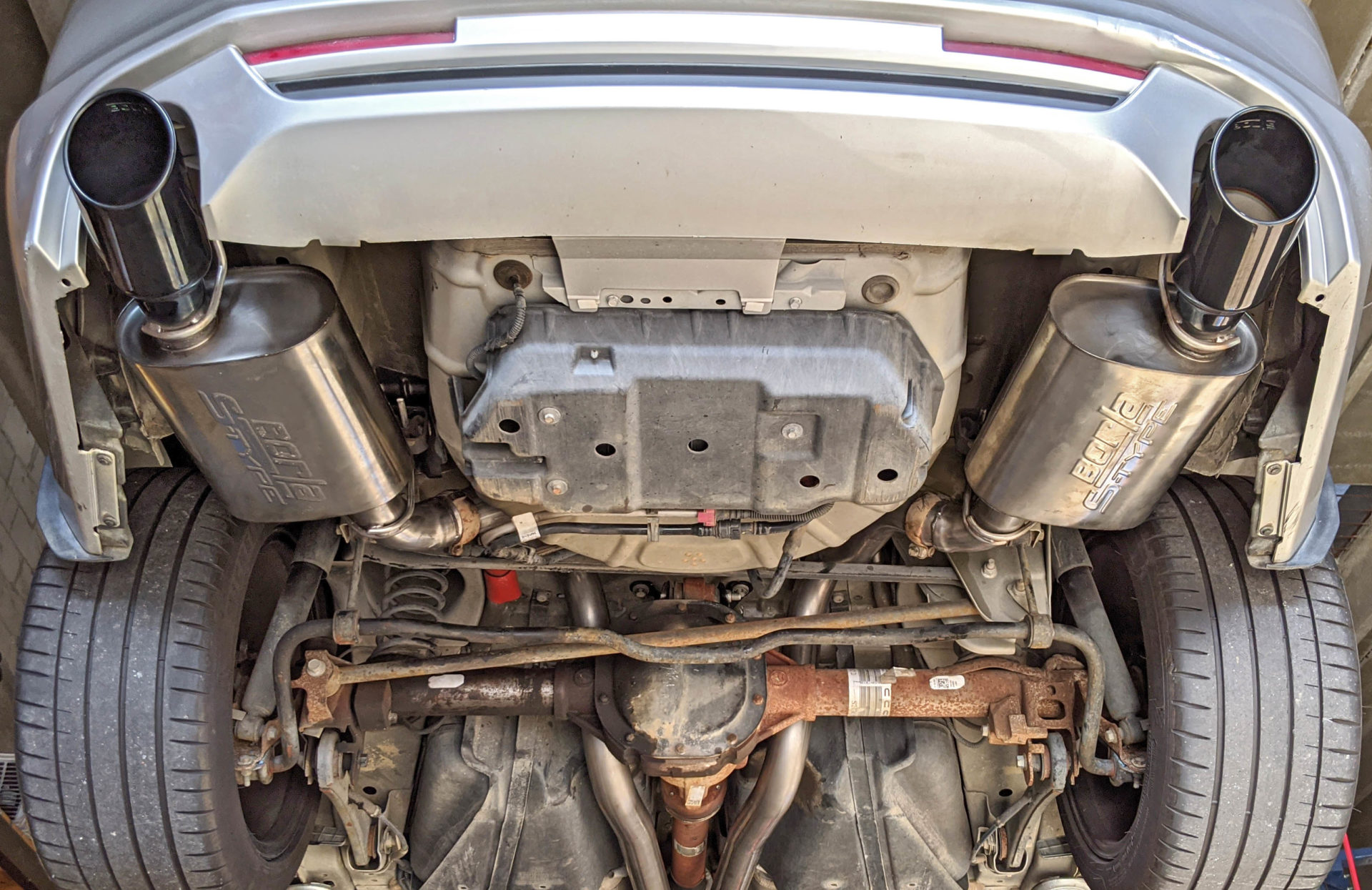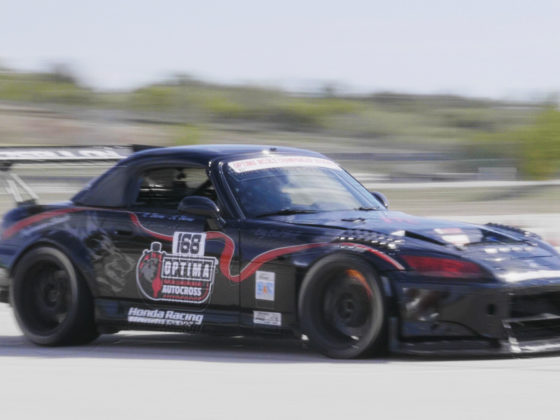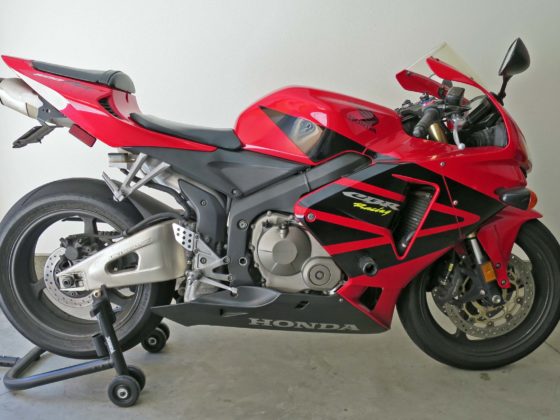 Back over at Palm Beach Dyno, we were ready to turn the rollers to see what the new Borla Exhaust would put down.
Back over at Palm Beach Dyno, we were ready to turn the rollers to see what the new Borla Exhaust would put down.
 The Borla S-Type Cat-Back Exhaust put down 408.51 WHP and 362.21 LB-FT of torque (BLUE) over where we previously left off after a tune (RED). This gave us a peak to peak gain of 3.79 WHP and 3.57 LB-FT of torque and a maximum gain of 7.89 WHP and 7.10 LB-FT of torque at 5,800 RPM. The freer flowing mufflers and X-pipe improved the efficiency of our engine across the board with an average increase of 5-6 WHP from 3,700 RPM to redline.
The Borla S-Type Cat-Back Exhaust put down 408.51 WHP and 362.21 LB-FT of torque (BLUE) over where we previously left off after a tune (RED). This gave us a peak to peak gain of 3.79 WHP and 3.57 LB-FT of torque and a maximum gain of 7.89 WHP and 7.10 LB-FT of torque at 5,800 RPM. The freer flowing mufflers and X-pipe improved the efficiency of our engine across the board with an average increase of 5-6 WHP from 3,700 RPM to redline.
While the peak gains from the exhaust weren’t as high as what we saw on the Gen-2, the average torque improvement across the entire rev range was very similar. We were very pleased to pick up a few more horses, reduce weight, and greatly improve the sound of our Mustang.
 Next, we tested the effects of removing the lid of an enclosed airbox. To reiterate what was said in Part 2: we fully expect to see gains by removing the lid in a static environment, on a dyno, with the hood open. This will reduce the restriction and free up the intake to suck in cool ambient air from the dyno room. However, this is not realistic or an accurate representation of the car’s real power out on the road with the hood shut, and positive pressure at the front of the car forcing air into the factory air inlet.
Next, we tested the effects of removing the lid of an enclosed airbox. To reiterate what was said in Part 2: we fully expect to see gains by removing the lid in a static environment, on a dyno, with the hood open. This will reduce the restriction and free up the intake to suck in cool ambient air from the dyno room. However, this is not realistic or an accurate representation of the car’s real power out on the road with the hood shut, and positive pressure at the front of the car forcing air into the factory air inlet.
Closed airboxes work a lot harder to suck in ambient air while on a dyno, when air is not being rammed into the inlet like it does out on the road. Industrial tilt floor fans or squirrel cage blowers commonly used in dynos don’t come anywhere close to producing the airflow and pressure the front of a car sees at speed. Because of this, you’ll likely never see a closed airbox equal or outperform an open-element air filter design on a dyno. But out on the road, in most cases, closed airboxes make more power because of the ram-air effect of dense ambient air, while open-element intakes suck in hot engine bay air.
 With the carbon fiber lid of our K&N intake removed, we were read to see how much (unrealistic) power we would gain.
With the carbon fiber lid of our K&N intake removed, we were read to see how much (unrealistic) power we would gain.
 As we expected, removing the carbon fiber lid made more power. Peak power increased by 8.72 WHP and peak torque by 1.31 LB-FT (GREEN). This now puts us at 417.23 WHP and 363.52 LB-FT of torque. The gains started at 5,000 RPM and increased all the way to redline. As the revs increased, the stock intake quickly became a restriction with no airflow ramming air into the intake. This is exactly why open element air filters and “Cold-Air-Intakes” reign supreme on the dyno.
As we expected, removing the carbon fiber lid made more power. Peak power increased by 8.72 WHP and peak torque by 1.31 LB-FT (GREEN). This now puts us at 417.23 WHP and 363.52 LB-FT of torque. The gains started at 5,000 RPM and increased all the way to redline. As the revs increased, the stock intake quickly became a restriction with no airflow ramming air into the intake. This is exactly why open element air filters and “Cold-Air-Intakes” reign supreme on the dyno.
It’s interesting to see a 3-4 LB-FT of torque loss between 3,500-4,600 RPM.
Quick Reference:
Page 1 – Stock Exhaust & Borla S-Type
Page 2 – Stock Exhaust Analysis
Page 3 – Crossover Pipe Removal vs Borla
Page 4 – Mid Pipe & Muffler Removal vs Borla
Page 5 – Borla Installation
Page 6 – Borla Installed
Page 7 – Dyno Borla & K&N Airbox Lid On vs Off
Page 8 – Dyno JLT vs K&N Intake. New PBD Tune Dyno
Page 9 – Dyno Overlays: Stock, Tuned Stock Intake Manifold, 2016 Mustang, 2018 Mustang, 2012 Boss 302, Conclusion




14 comments
Great write up with usable comparisons. Do race mustangs tend to stick with duals or go to single for weight?
The old FR500Cs had dual throttle bodies, but most Mustangs now use single round TBs for simplicity.
Really enjoy your perspective on so many things and this build is enjoyable to follow.
Page three, second paragraph first sentence says intake manifold, but probably meant exhaust manifold.
You got me, I got you 😉
Thanks for the feedback!
Thanks for the articles! Stay safe.
Very timely article for me, as I’ve been looking at 11-14 GTs as a fair weather DD, and part time track car. My brother has 12 Boss, but a TP/Brembo GT fits my needs and budget. Is there a Part 1 posted somewhere?
Thanks for posting. Looking forward to Part 4…
what was the alleged speed for the intake on road lid on test? and what gear?
I used nothing but Borla Exhaust on all the BDX Mustangs we made from 2007 to 2009. Love it. Trivia, in 1988 my Fox was the mule for the 1st Mustang Borla system. Alex borrowed it and I drove his T-bird for about 2 weeks.
That’s really cool historical fact! I have Borla on my Tundra tow vehicle, nice mellow V8 rumble in Touring spec. And got an S-Type coming for my Turbo 4 Camaro 1LE, which needs an exhaust note desperately.
Great information, I own a 2014 GT Mustang that I track 3 to 4 times a year, I have done some suspension and brake mods but no engine mods yet.
Really appreciate how methodical and well thought out all your articles are Billy!
Looking forward to seeing the continued progression of this car. Are you planning to road test the airbox lid comparison as described on Page 7?
Factory exhaust is 409ss not mild steel. Pretty much every factory exhaust since the 90s is 409ss. You will find steel components like flanges and hangers, but piping and mufflers are 409ss. Some later stuff is aluminized coated 409ss like the back half of Mopar exhausts, pickup truck tailpipes, generally anything somewhat visible from the outside of the vehicle.
Long tube headers, albeit expensive, will indeed provide for a substantial increase in RWHP….and RWTQ. You would be up to 450 rwhp with LT’s….and that is a bunch. But that would require either no cats..and an X….or a hi-flow catted X. Then the appropriate mufflers, to tame the noise/any drone. Resonators, just before the rear axle, would also tame noise down, if the mufflers didn’t do the job.
We didn’t want the car to be obnoxiously loud, which long tube headers often do. The car is already borderline with cats and the quietest muffler Borla makes. We are happy with the sound and performance with the current package, meeting our performance goals.